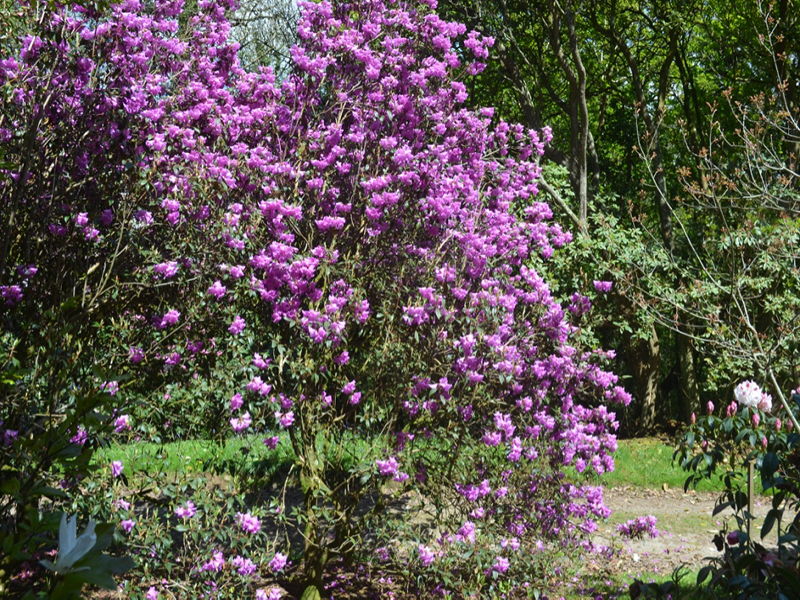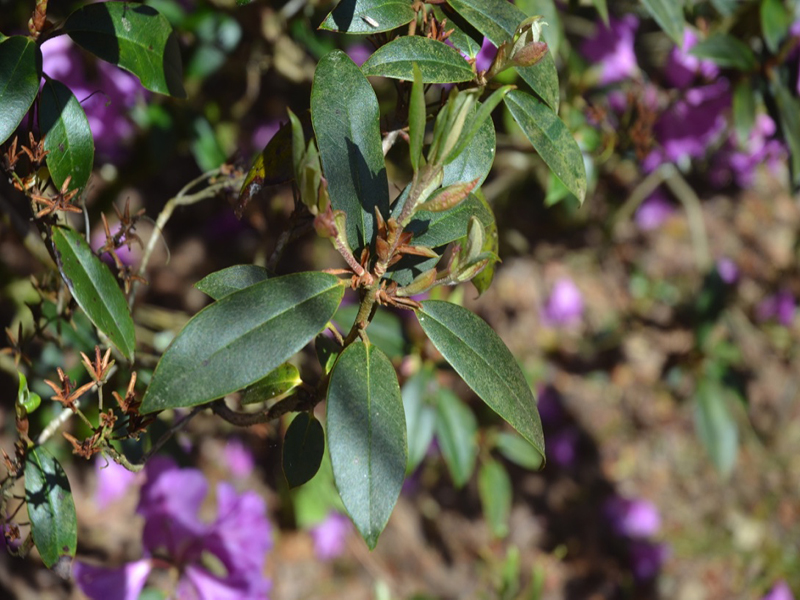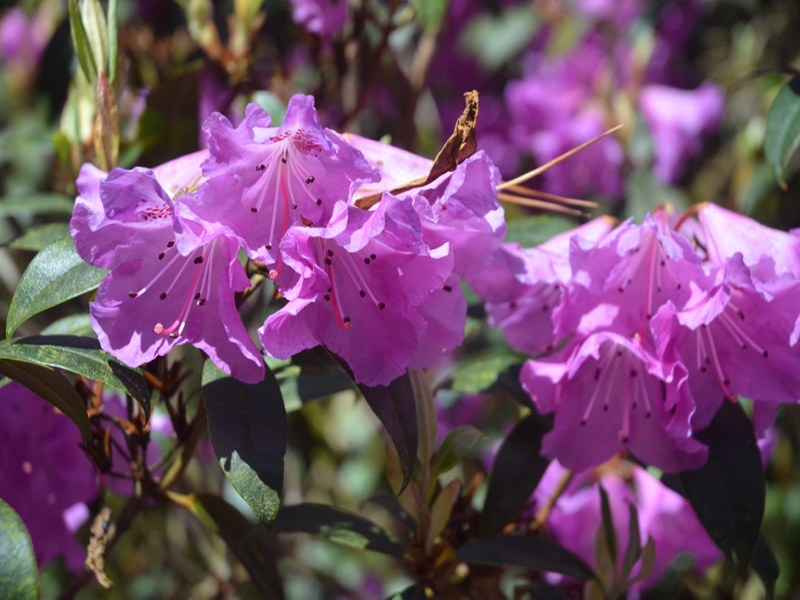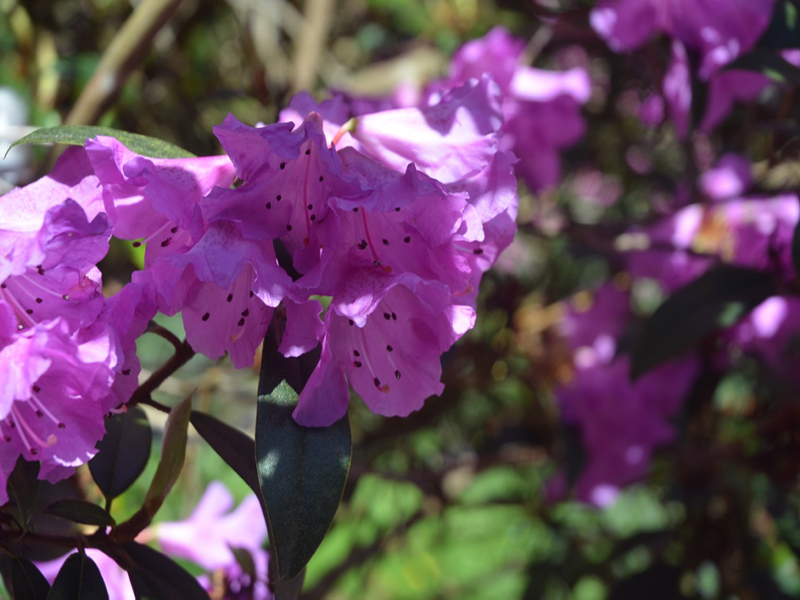
Woody > Rhododendron > Rhododendron desquamatum > Rhododendron desquamatum
Rhododendron desquamatum
Rhododendron
Origin: Native to north west Yunnan and of bordering parts of Szechwan, Tibet, and Myanmar.
| Family |
| Ericaceae |
| Genus |
| Rhododendron |
| Species |
| desquamatum |
| Category |
| Woody |
| Type |
| Tree (evergreen), Shrub (evergreen) |
| Synonyms |
| Rhododendron catapastum, Rhododendron stenoplastum, Rhododendron squarrosum |
| USDA Hardiness Zone |
| 5 - 8 |
| Canadian Hardiness Zone |
| 6 - 8a |
| RHS Hardiness Zone |
| H7 - H4 |
| Temperature (°C) |
| -34 |
| Temperature (°F) |
| -30 |
| Height |
| 8 m |
Photographs
Description and Growing Information
Flowering Period
| Landscape |
| Informal hedge. Will provide a beautiful display of mauve or pinkish mauve to purple flowers which are very appealing. It is not recommended for use unless it is kept in check by trapping it between a house wall and a concrete pathway. |
| Cultivation |
| Best grown in moist, fertile, well-drained loams in full sun to part shade. Best flowering occurs in full sun. |
| Shape |
| Low growing dome. |
| Pests |
| Vine weevils, white flies, scale insects, caterpillars, aphids and honey fungus. |
| Habitat |
| Mild, wet, richly acidic soil regions, lightly wooded and open meadow areas at lower elevations. |
| Bark/Stem Description |
| Dark brown-grey, mild fissures can be found on older growth. |
| Leaf Description |
| Leaves 7 - 10 cm long, 1 - 2 cm wide, elliptic, oblong-elliptic, or occasionally lanceolate or oblanceolate, acuminate at the apex, cuneate to rounded at the base, upper surface dull green, petioles about 1 cm long and scaly. |
| Flower Description |
| Inflorescence terminal, with four to eight flowers on pedicels 1 - 2 cm long, scaly. Calyx rim-like, scaly. Corolla funnel-shaped, very often widely so or almost flat, up to about 4 cm long and 5 cm wide, scaly on the outside, varying in colour from mauve or pinkish mauve to purple, spotted with crimson. Ovary densely scaly and style glabrous. |
| Fruit Description |
| The fruit is a dry capsule 1.5-2.5 cm in length, filled with many seeds. |
| Notable Specimens |
| Caerhays Castle, Goran, Cornwall, United Kingdom. |
| Propagation |
| Seeds germinate easily without any special treatment to break dormancy. Cuttings should be treated with alcohol for 5 seconds, placed in a well drained media and misted. |
References
Rhododendron desquamatum from the website Trees and Shrubs Online (treesandshrubsonline.org/articles/rhododendron/rhododendron-desquamatum/). Accessed 20-6-2019.



